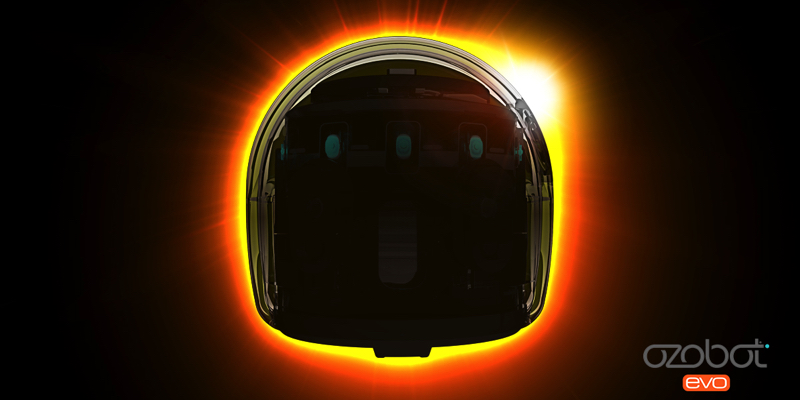2019 has been a great year for celestial events! We saw the Super Blood Wolf Moon in January, which was the combination of a full moon and the last total lunar eclipse until 2021. We’re familiar with the saying, “once in a blue moon,” right? Well, we got a seasonal blue moon in May. The Strawberry full moon appeared along with planet Jupiter in June. And now July shall carry on the pattern as we prepare to experience the only total solar eclipse of 2019 today, July 2nd!
Unfortunately, the eclipse won’t be visible to us at Ozobot HQ (or anywhere in the U.S.), but we can celebrate the only total solar eclipse of 2019 virtually with this lesson below with Ozoots Evo or Bit!
First, you may ask, “What exactly is a total solar eclipse?” Make sure to check out our previous post on the Total Eclipse of the Evo to learn more as you observe the phenomenon today!
Next, head to our Lesson Library to download the full plan for “Eclipses and Celestial Mechanics”. Ideal for students on summer break between grades 2 through 12, you can use both of our 2 Ways to Code—Color Codes and OzoBlockly—within this coding exercise. Explore how programming helps us model the precise movements of the planets, moons, and stars, which is exactly how astronomers at NASA can give us location calculators like this one that know the path of the eclipse before it happens!
Lastly, make sure to check out live streams of the eclipse to watch while you complete the activity, and share all of your celestial creations with us on social media by tagging @Ozobot and using #OzoSquad!
We already have some awesome creative coders to give a shout out to at the Whitman County Library, who held a STEAM session in June on the Magic of Eclipses. Fantastic summer learning all!
Magic of Eclipses with @Ozobot
— Whitman Co Library (@WhitCoLib) June 18, 2019
today Tues, June 18 at 3:30 pm at the #StJohnLibrary! Observe the orbital mechanics of two bodies in the vacuum of space (#Earth & #Moon) & plot #OzoCodes to model that behavior with an #Ozobot. #WhitmanCountyLibrary #StJohnWA #STEM #Coding pic.twitter.com/gRJWX5rsXI









